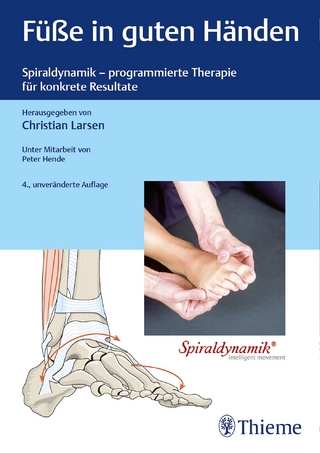
Functional 3D Tissue Engineering Scaffolds
Woodhead Publishing Ltd (Verlag)
978-0-08-100979-6 (ISBN)
Part 1 focuses on the fundamentals of 3D tissue scaffolds, examining information on materials, properties, and trends. Part 2 discusses a wide range of conventional technologies for engineering functional 3D scaffolds, leading the way to a discussion on CAD and advanced technologies for functional 3D scaffold engineering. Chapters in part 3 study methods for functionalizing scaffolds to support a variety of in vivo functions whilst the final set of chapters provides an important review of the most significant applications of functional 3D scaffolds within tissue engineering.
This book is a valuable resource for biomaterial scientists and biomedical engineers in academia and industry, with interests in tissue engineering and regenerative medicine.
Dr. Ying Deng is an Associate Professor in the Department of Biomedical Engineering at the University of South Dakota (USD). Dr. Deng has authored or co-authored various articles in leading journals, exploring biomaterial applications, especially tissue engineering, and approaches to control biomaterial-related biofilm formation. She has co-authored a book chapter, patents, and has made dozens of presentations at national and international conferences. She has received research funding for multifunctional (biocompatible and antimicrobial) biomaterial development from the South Dakota Board of Regents (SDBOR), the United States Department of Defense, and the National Institutes of Health. In addition, she is currently serving as the Chair of the Sioux Valley Local Section of the American Chemical Society. Her research interests include the development of biocompatible and antimicrobial materials, tissue engineering, drug delivery systems, and surface modification and characterization of biomedical implants and devices. Mr. Jordan Kuiper is a graduate student in the Department of Biomedical Engineering at the University of South Dakota (USD). The research he’s invested in concerns tissue engineering scaffolds, of which he has presented in national and international conferences in both oral and poster presentations. He has won the University of South Dakota’s idea fest twice and is the current Constitution and Bylaws Chair for Society For Biomaterials for USD’s Biomedical Engineering Department.
1. Introduction 2. Mechanical and biological properties of scaffold materials 3. Natural materials for 3D scaffolds 4. Bone/neural applications 5. Melt molding technologies for 3D scaffold engineering 6. Phase separation technologies for 3D scaffold engineering 7. Gas foaming technologies for 3D scaffold engineering 8. Freeze drying technologies for 3D scaffold engineering 9. Textile technologies for 3D scaffold engineering 10. 3D printing technologies for 3D scaffold engineering 11. Scaffold functionalization to support tissue biocompatibility 12. Functional Three-Dimensional Scaffolds for Skeletal Muscle Tissue Engineering 13. 3D functional scaffold for cardiovascular tissue engineering 14. 3D functional scaffold for skin tissue engineering 15. 3D functional scaffolds for tendon tissue engineering 16. 3D functional scaffolds for cartilage tissue engineering 17. 3D functional scaffolds for dental tissue engineering
| Erscheinungsdatum | 29.01.2018 |
|---|---|
| Verlagsort | Cambridge |
| Sprache | englisch |
| Maße | 152 x 229 mm |
| Gewicht | 900 g |
| Themenwelt | Medizin / Pharmazie ► Physiotherapie / Ergotherapie ► Orthopädie |
| Technik ► Maschinenbau | |
| Technik ► Medizintechnik | |
| Technik ► Umwelttechnik / Biotechnologie | |
| ISBN-10 | 0-08-100979-8 / 0081009798 |
| ISBN-13 | 978-0-08-100979-6 / 9780081009796 |
| Zustand | Neuware |
| Haben Sie eine Frage zum Produkt? |
aus dem Bereich


